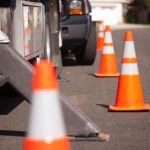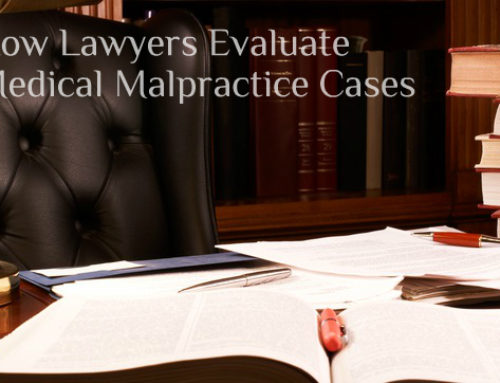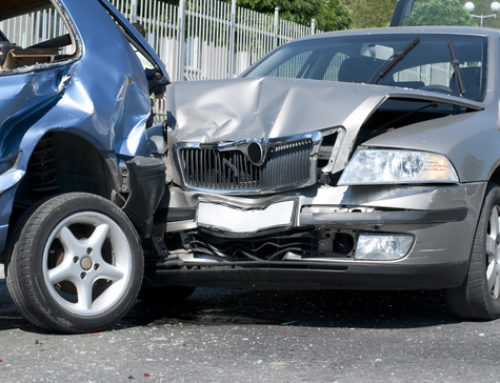In 2013, Occupational Health and Safety Administration (OSHA) performed almost 100,000 workplace inspections through its federal and state offices. The ten most common citations for workplace safety are described below as well as steps employers to can take to ensure their workers are safe on the job. If you feel your workplace does not meet these standards, we encourage you to contact an attorney who can help you know how to promote a safer environment at your workplace. If you’ve been injured on the job, speak with a competent workers’ compensation attorney today.
1. Fall Protection
Employers must set up the work place to prevent employees from falling off of overhead platforms, elevated work stations or into holes in the floor and walls. OSHA requires that fall protection be provided at elevations of four feet in general industry workplaces, five feet in shipyards, six feet in the construction industry and eight feet in longshoring operations. In addition, OSHA requires that fall protection be provided when working over dangerous equipment and machinery, regardless of the fall distance.
2. Hazard Communication Standard
The Hazard Communication Standard (HCS) provides a common and coherent approach to classifying chemicals and communicating hazard information on labels and safety data sheets. An example is the Skull and Crossbones sign to warn of toxicity. Currently, OSHA is updating the HCS and as of June 1, 2015, employers will be required to comply with the new standards.
3. Scaffolding
In a Bureau of Labor and Statistics (BLS) study, 72% of workers injured in scaffold accidents attributed the accident either to the planking or support giving way, or to the employee slipping or being struck by a falling object. All of these can be controlled by compliance with OSHA scaffolding standards which can be accessed at http://www.bnl.gov/esh/shsd/pdf/scaffolds_c.pdf.
4. Respiratory Protection
Respirators protect workers against insufficient oxygen environments, harmful dusts, fogs, smokes, mists, gases, vapors, and sprays. These hazards may cause cancer, lung impairment, diseases, or death. Respirators protect the user in two basic ways. The first is by the removal of contaminants from the air. Respirators of this type include particulate respirators, which filter out airborne particles, and air-purifying respirators with cartridges/canisters which filter out chemicals and gases. Other respirators protect by supplying clean respirable air from another source. Respirators that fall into this category include airline respirators, which use compressed air from a remote source, and self-contained breathing apparatus (SCBA), which include their own air supply.
5. Electrical Wiring
Electricity has long been recognized as a serious workplace hazard. Engineers, electricians, and other professionals work with electricity directly, including working on overhead lines, cable harnesses, and circuit assemblies. Others, such as office workers and sales people, work with electricity indirectly and may also be exposed to electrical hazards. OSHA’s electrical standards are designed to protect employees exposed to dangers such as electric shock, electrocution, fires, and explosions.
6. Forklifts
Powered industrial trucks, commonly called forklifts or lift trucks, are used in many industries, primarily to move materials. They can also be used to raise, lower, or remove large objects or a number of smaller objects on pallets or in boxes, crates, or other containers. Powered industrial trucks can either be ridden by the operator or controlled by a walking operator. Determining the best way to protect workers from injury largely depends on the type of truck operated and the work-site where it is being used. Employers must ensure that each powered industrial truck operator is competent to operate a powered industrial truck safely.
7. Ladders
This violation is a subset of Fall Protection described above. To prevent employees from being injured from falls, employers must:
- Guard every floor hole into which a worker can accidentally walk (using a railing and toe-board or a floor hole cover).
- Provide a guard rail and toe-board around every elevated open sided platform, floor or runway.
- Regardless of height, if a worker can fall into or onto dangerous machines or equipment (such as a vat or acid or a conveyor belt) employers must provide guardrails and toe-boards to prevent workers from falling and getting injured.
- Other means of fall protection that may be required on certain jobs include safety and harness and line, safety nets, stair railings and hand rails.
8. Control of Hazardous Energy
Energy sources including electrical, mechanical, hydraulic, pneumatic, chemical, thermal or other sources in machines and equipment can be hazardous to workers. Workers servicing or maintaining machines or equipment may be seriously injured or killed if hazardous energy is not properly controlled. Proper lockout/tagout (LOTO) practices and procedures safeguard workers from the release of hazardous energy. OSHA’s Lockout/Tagout fact sheet (PDF*) describes the practices and procedures necessary to disable machinery or equipment to prevent the release of hazardous energy.
9. Electrical Systems Design
Electrical Systems Design is a subset of Electricity described above. OSHA’s electrical standards can be found at https://www.osha.gov/SLTC/electrical/index.html
10. Machinery and Machine Guarding
Moving machine parts have the potential to cause severe workplace injuries, such as crushed fingers or hands, amputations, burns, or blindness. Safeguards are essential for protecting workers from these preventable injuries. Any machine part, function, or process that may cause injury must be safeguarded.












